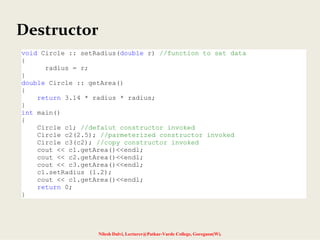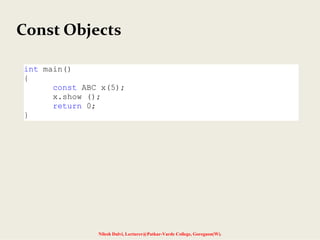The document discusses constructors and destructors in C++, highlighting their characteristics, types, and functionalities. It explains default, parameterized, copy, and dynamic constructors, along with the purpose and syntax for destructors. Additionally, it covers const member functions and const objects, emphasizing their limitations and behaviors in object-oriented programming.
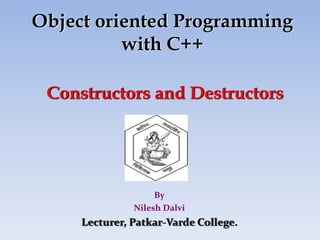
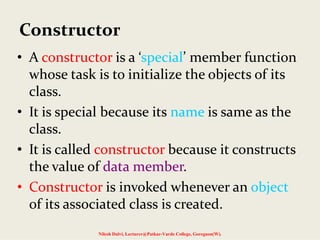



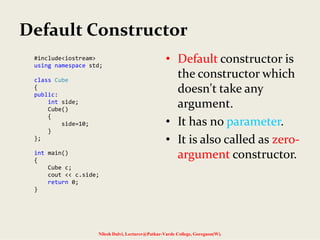
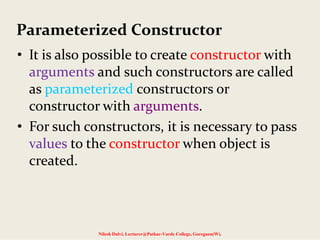
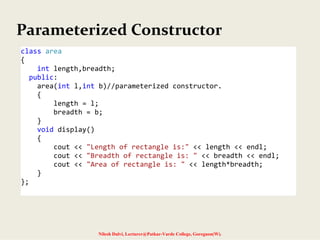

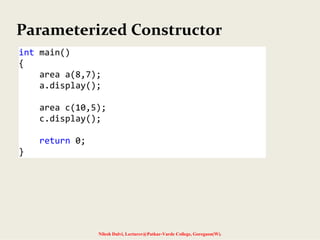
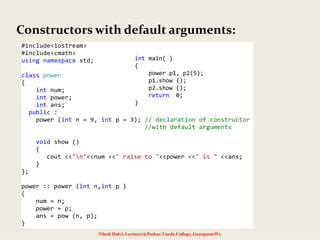
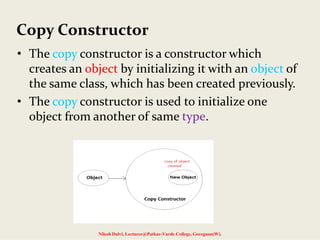

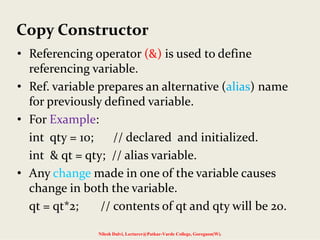
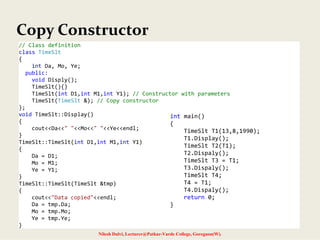
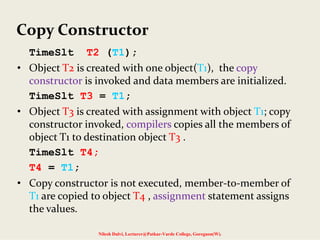
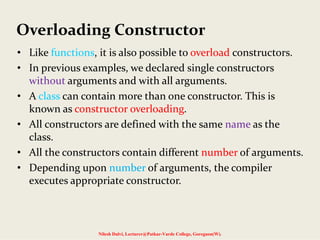

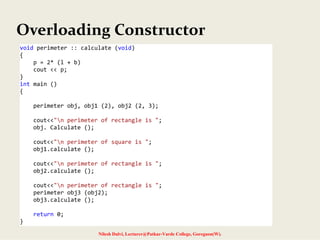
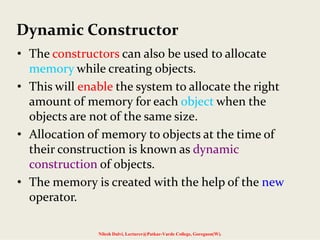
![Dynamic Constructor
Nilesh Dalvi, Lecturer@Patkar-Varde College, Goregaon(W).
#include <iostream>
#include <string>
using namespace std;
class str
{
char *name;
int len;
public:
str()
{
len = 0;
name = new char[len + 1];
}
str(char *s)
{
len = strlen(s);
name = new char[len + 1];
strcpy(name,s);
}
void show()
{
cout<<"NAME IS:->"<<name<<endl;
}
void join(str a, str b);
};](https://image.slidesharecdn.com/5-140715143019-phpapp01/85/Constructors-and-destructors-21-320.jpg)
![Dynamic Constructor
Nilesh Dalvi, Lecturer@Patkar-Varde College, Goregaon(W).
void str :: join(str a, str b)
{
len = a.len + b.len;
name = new char[len + 1];
strcpy(name, a.name);
strcat(name, b.name);
}
int main()
{
char *first="OOPS";
str n1(first),n2("WITH"),n3("C++"),n4,n5;
n4.join(n1,n2);
n5.join(n4,n3);
n1.show();
n2.show();
n3.show();
n4.show();
n5.show();
return 0;
}](https://image.slidesharecdn.com/5-140715143019-phpapp01/85/Constructors-and-destructors-22-320.jpg)



